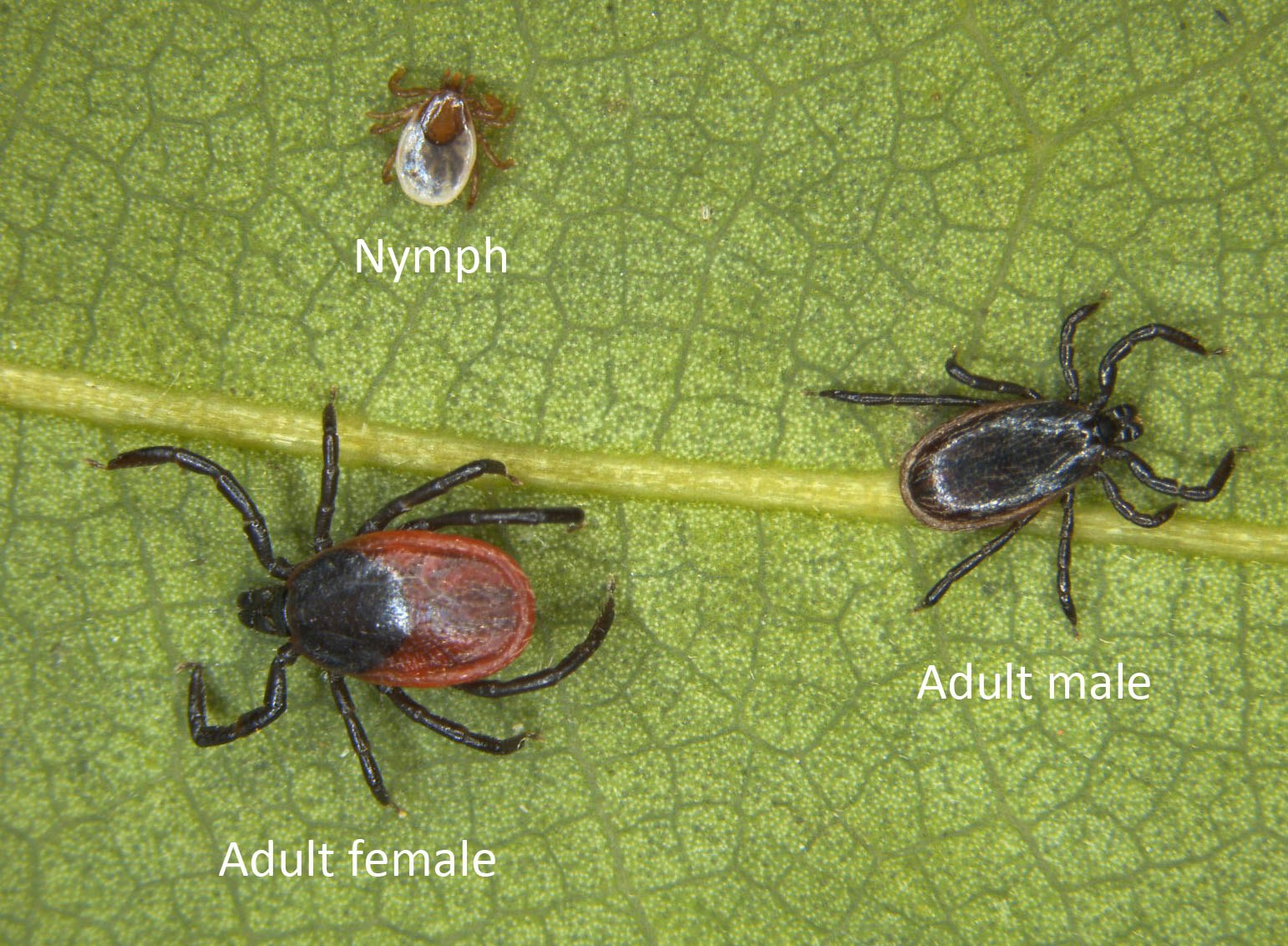Western black-legged tick

Scientific name: Ixodes pacificus
Size: Variable (depending on life stage)
Where found: Natural areas
What bloodsucking creature begins life with 6 legs, grows 2 more legs after feeding on blood, has no eyes, but can sense you walking down the trail? No, not some creature from a horror movie, but the western black-legged tick—our local vector of Lyme disease.
A tiny six-legged tick larva hatches from an egg on the forest floor. The larva patiently waits (sometimes for months) for an unlucky animal to brush by (rodents and birds are common larval hosts). The larva attaches to the host, feeds on blood, drops off, and molts into a slightly larger eight-legged nymph that (unfortunately) is willing to bite humans and many other animals, especially lizards. Nymphs are often found in leaf litter, or on mossy rocks, logs and other wooden surfaces in natural areas (the exact places kids like to climb on when exploring). After feeding, the nymph molts to a larger adult who will seek a nearby trail to patiently await its next (and final) meal.
Perhaps the most surprising aspect of this life cycle is the fact that it happens very slowly—generally at least three years pass from the time an egg hatches until that individual’s offspring hatch. So, next time someone asks you if ticks have a “super power”, you could accurately say that they are extremely good at waiting patiently. This is perhaps their only admirable quality.
Locally, adult western black-legged ticks are most abundant in the cooler months, while the nymphs are generally most active during the spring and into the summer. The seasonal abundance of other local tick species results in the reality that ticks can be encountered in Marin and Sonoma counties twelve months out of the year.
Remember to carefully check yourself, your children and your pets when you visit natural habitats where ticks may be present. Click here to learn more about ticks.
